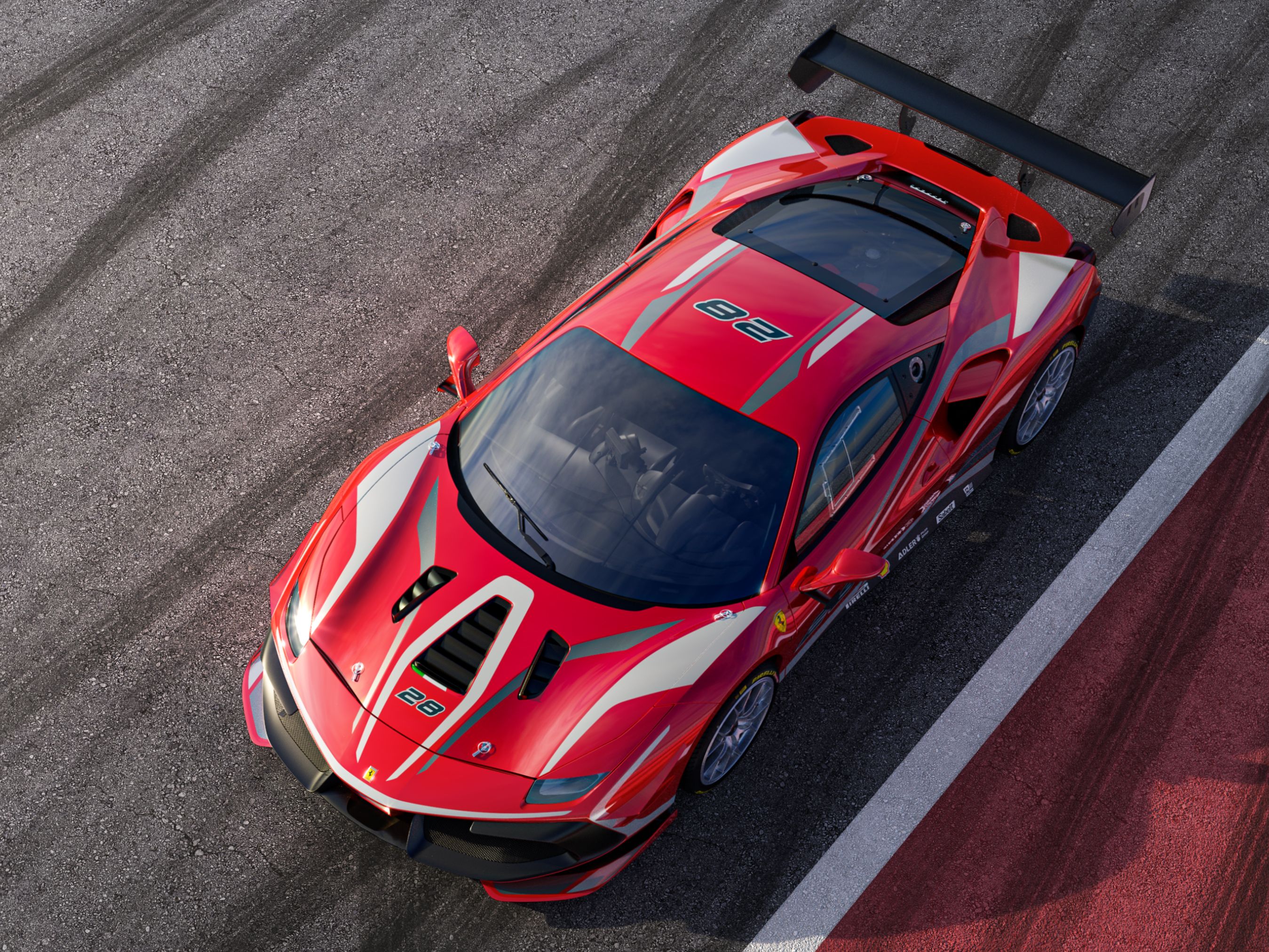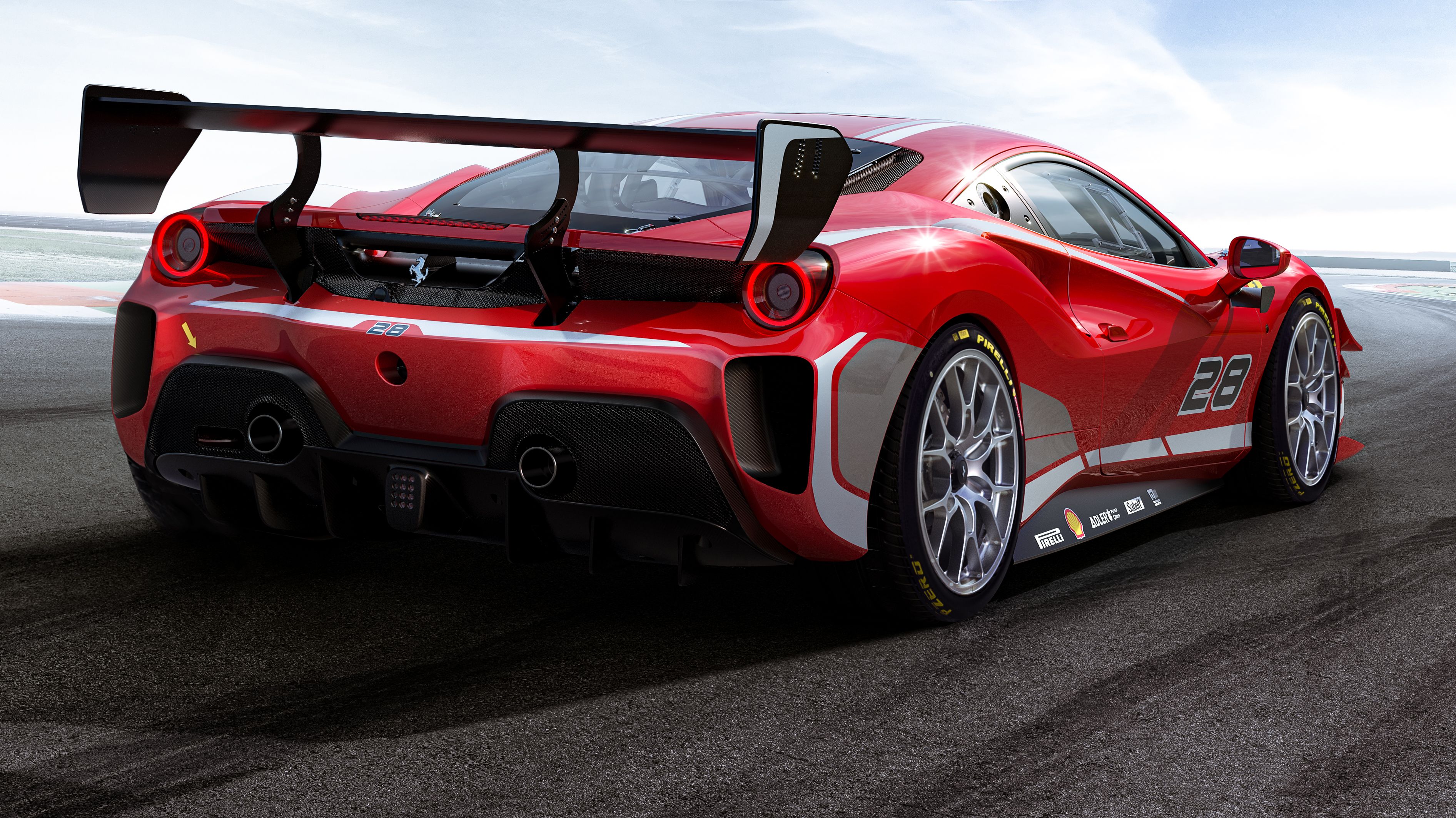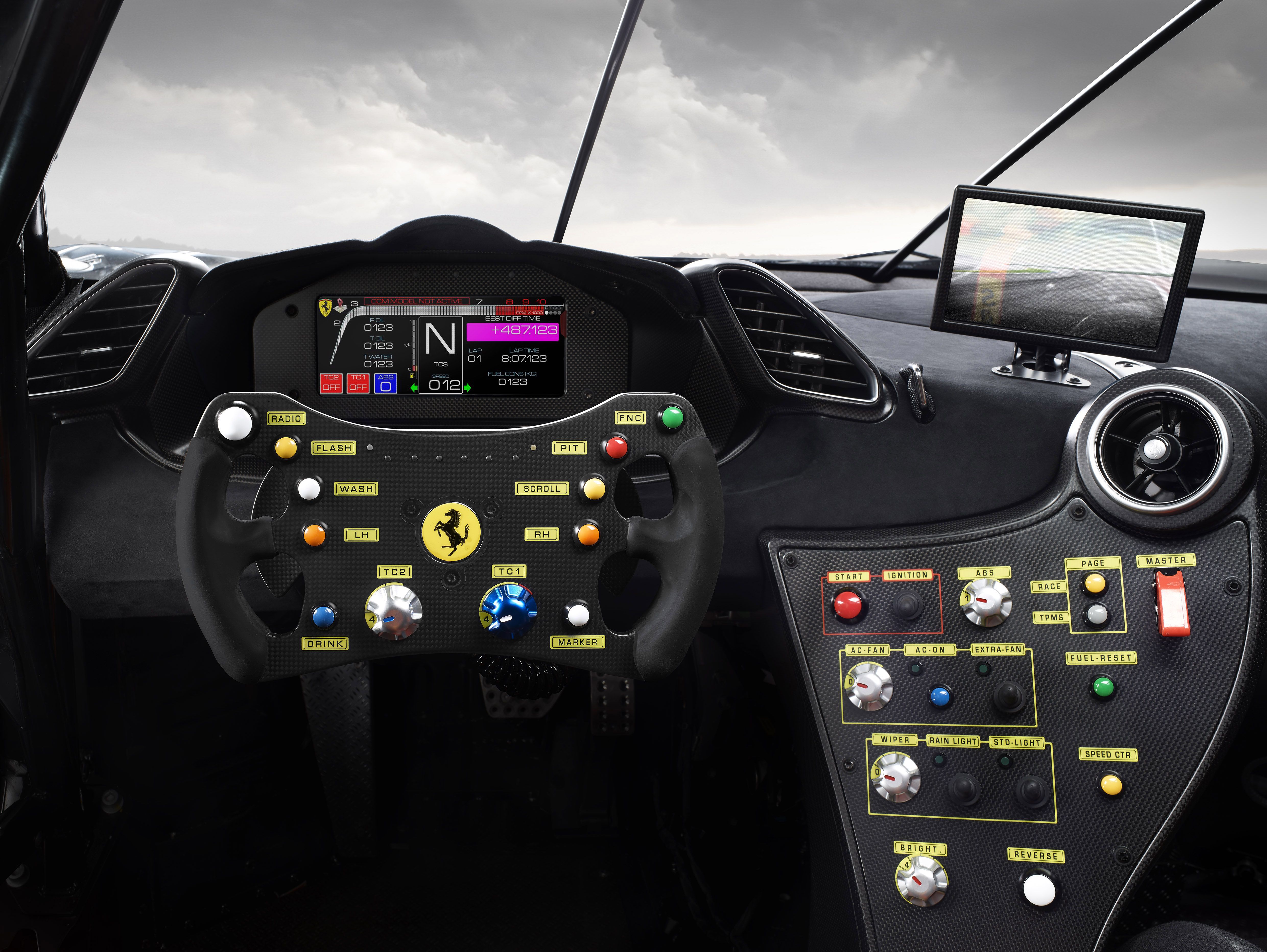Ferrari has just lifted the wraps off its 2020 488 Challenge Evo. The new track-ready speed machine is described as an improvement in aerodynamics first and foremost, with teams now allowed to alter the level of downforce on the front axle independently of the rear axle. On top of that, the Evo comes with a souped-up body kit and looks sharper than ever. Stay close as we walk you through everything you need to know about the 2020 Ferrari 488 Challenge Evo.
What Makes the 2020 Ferrari 488 Challenge Evo Special?
|
|
ids=868646,868647 |
no_overlay=false |
before_label=Ferrari 488 Challenge EVO |
after_label=Ferrari 488 Challenge> |
Well, every Ferrari is special. It’s just that the Prancing Horse has made a habit out of further beefing up some of its products for race track use. The freshly-released 2020 Ferrari 488 Challenge Evo is one such product. It is still based on the Ferrari 488 Challenge, which itself stems from the road-going, V-8 powered Ferrari 488 GTE.
Ask Ferrari what’s the deal with the 2020 488 Challenge Evo special, and you’ll be told that the Evo package applied to the 488 Challenge is here to “maximize the synergy between aerodynamics and vehicle dynamics.” More specifically, Ferrari further tweaked how tires, downforce, and the car’s electronic brain work together for better grip, downforce, and ultimately, performance. Speaking of that, the 488 Challenge Evo’s front end has been redesigned to produce more downforce on the axle, a change that is said to improve turn in and cut down understeer out of corners
Well, it’s enough to compare the 488 Challenge and the 488 Challenge Evo front ends. In the latter, the front overhang is longer, for better balance and more surface for the air to press. The radiator grille features longer profiles, while the U-shaped air intake positioned in the center of the front bumper feeds the much-needed air to the brakes, for obvious cooling purposes. A larger splitter is also present, and it now has turning vanes at each end, allowing for better airflow management. Last but not least, the front bumper’s sides get a second flick.
There’s also a new winglet positioned under each side mirror - these are designed to lead in more air into the intercooler, while the rear end is reminiscent of the beast going by the name of FXX-K. The rear bumper has two new air vents - one for each side - and Ferrari also carved a new air vent set below the rear spoiler, in the engine air outlet grille - also in the name of downforce. All in all, the 488 Challenge Evo produces up to 50 percent more downforce overall compared to the 488 Challenge.
OK, but how about the interior?
Again, Ferrari looked back at the FXX-K Evo - but also at the Le Mans-bred 488 GTE - when tweaking the interior for the 488 Challenge Evo. Looking at the official pictures, we can easily spot why Ferrari says that he steering wheel is “conceptually different,” in the sense that it's not a steering wheel anymore but more of a fancy joystick of sorts. Unlike the Ferrari 488 Challenge which featured a more traditional steering wheel and elephant ear-sized carbon-fiber paddle shifters, this new design neatly integrates those to such extend that's you can't even see them anymore from some angles.
If you happen to recall, the interior of the Ferrari 488 Challenge is as spartan as they come, and the same goes for the 488 Challenge Evo. Just as before, the centerpiece is a button-laden panel tilted towards the driver - by the way, there's no passenger seat whatsoever inside the 488 Challenge Evo, but we didn't expect anything else.
Coming back to the plethora of buttons found on the center console, some of the buttons and knobs found here control the reverse gear, the air-conditioning system, the ignition, the windshield wiper and the car's lights. The lower area of the steering joystick features two traction control-altering buttons while on top of the dashboard sits a screen that displays images captured by the rearview camera, letting the driver know what’s happening behind the car.
|
|
ids=868648,868649 |
no_overlay=false |
before_label=Ferrari 488 Challenge EVO |
after_label=Ferrari 488 Challenge> |
The driver also gets a digital instrument cluster that displays more pertinent and useful info during the race, including the current gear, traction control status, engine speed, lap time, fuel level, as well as water and oil temperature. Trim-wise, the cabin is a mix of Alcantara and carbon fiber, while the pedals are made of aluminum. In other words, the typical Ferrari race-ready configuration.
Was the engine tweaked in any way?
Well, no. As we mentioned at the beginning of the article, the Ferrari 488 Challenge Evo only gets an imbued aero package with bits and bobs that only affect the outer shell. That means the turbocharged 660-horsepower 3.9-liter V-8 is still in place, as is its torque figure of 560 pound-feet. The powerhouse is bolted to Ferraris F1 DCT transmission - which gets a remapped program different from the one used by the street-legal 488 GTB.
Ferrari 488 GTB specifications
|
Type |
V8 – 90° Turbo |
|---|---|
|
Overall displacement |
3,902 cm3 |
|
Maximum power |
660 HP @ 8,000 RPM |
|
Maximum torque |
560 LB-FT @ 3,000 rpm in VII gear |
|
0-100 km/h (62 mph) |
3.0 seconds |
|
0 -200 km/h (124 mph) |
8.3 seconds |
|
Maximum speed |
330 KM/H (205 MPH) |
In practice, the engine-gearbox duo allows the 488 Challenge to fall just one second behind the FXX-K on the Fiorano race track, with a lap time of 1:15.5 minutes. That’s also four seconds faster than the mighty LaFerrari on the same circuit, and eight seconds faster than the standard road-going 488 GTB. Note that Ferrari doesn’t specify whether the Evo package alters some of these figures, but we’re hoping to hear soon from Maranello on this topic. There’s also no info on prices so far, but we’ll keep our antennae pointing up.




